Uploaded by Rafael Popper 5387 days ago Number of pages: 25 File's language: English Views: 1197
This report presents a strategy to create an Innovative Europe. Achieving this requires a combination of a market for innovative goods and services, focussed resources, new financial structures and mobility of people, money and organisations. Together these constitute a paradigm shift going well beyond the narrow domain of R&D and innovation policy.
Our central recommendation is that a Pact for Research and Innovation is needed to drive the agenda for an Innovative Europe. This requires a huge act of will and commitment from political, business and social leaders. Current efforts towards the revised Lisbon Agenda should be continued and reinforced but are not enough. In addition, simultaneous and synchronous efforts are needed in the three areas which constitute the Pact and which we use to structure this report:
First, at the core of our recommendations is the need for Europe to provide an innovation-friendly market for its businesses, the lack of which is the main barrier to investment in research and innovation. This needs actions on regulation, standards, public procurement, intellectual property and fostering a culture which celebrates innovation. A combination of supply and these measures to create demand should be focused in large scale strategic actions. We identify several examples: e-Health, Pharmaceuticals, Energy, Environment, Transport and Logistics, Security, and Digital Content. An independent High Level Coordinator should be appointed to orchestrate European action in each area.
Second, we see the 3% target as an indicator of an Innovative Europe, not as an end in itself. Measures are needed to increase resources for excellent science, industrial R&D and the science-industry nexus. Productivity of R&D must be increased. The proportion of structural funds spent on research and innovation should be trebled.
Third, far greater mobility is needed at three levels: Human resources need a step change in mobility across boundaries; Financial mobility requires an effective venture capital sector and new financial instruments for the knowledge-based economy; Mobility in organisation and knowledge means cutting across established structures to allow new linkages to be made through the instruments of European technology platforms and clusters.
More resources for R&D and innovation are a necessity but they are an insufficient means to achieve the goal of an Innovative Europe. A paradigm change is needed in which European values are preserved but in a new social structure.
An independent monitoring panel with support from the Commission should report annually on progress in relation to the Pact.
Europe and its citizens should realise that their way of life is under threat but also that the path to prosperity through research and innovation is open if large scale action is taken now by their leaders before it is too late.
 State-of-art of sustainable innovation
State-of-art of sustainable innovation Sustainable Innovation Policy Advice
Sustainable Innovation Policy Advice CASI-F: Common Framework for the Assessment and Management of Sustainable Innovation
CASI-F: Common Framework for the Assessment and Management of Sustainable Innovation Your passport to the future!
Your passport to the future! The technology horizon: Preliminary review on technologies impacting the future health and social care workforce
The technology horizon: Preliminary review on technologies impacting the future health and social care workforce CfWI Future workforce matters - Issue 4
CfWI Future workforce matters - Issue 4 CfWI Future workforce matters - Issue 4
CfWI Future workforce matters - Issue 4 Science Foundation Ireland (SFI) Agenda 2020
Science Foundation Ireland (SFI) Agenda 2020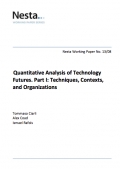 Quantitative Analysis of Technology Futures. Part I: Techniques, Contexts, and Organizations
Quantitative Analysis of Technology Futures. Part I: Techniques, Contexts, and Organizations myForesight: Malaysia's National Foresight Magazine (2nd Edition)
myForesight: Malaysia's National Foresight Magazine (2nd Edition) CfWI Future workforce matters - Issue 3
CfWI Future workforce matters - Issue 3 CfWI Future workforce matters - Issue 2
CfWI Future workforce matters - Issue 2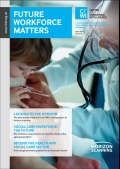 CfWI Future workforce matters - Issue 1
CfWI Future workforce matters - Issue 1 New Horizon Scanning Concepts, Practices and Systems
New Horizon Scanning Concepts, Practices and Systems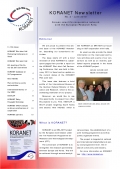 KORANET Policy Foresight Workshop in Vienna/Austria
KORANET Policy Foresight Workshop in Vienna/Austria The Use of Strategic Intelligence and Horizon Scanning
The Use of Strategic Intelligence and Horizon Scanning iKnow ERA Toolkit (2011)
iKnow ERA Toolkit (2011) iKnow National Studies (2011)
iKnow National Studies (2011) iKnow Policy Alerts (2011)
iKnow Policy Alerts (2011) iKnow Interviews (2011)
iKnow Interviews (2011) iKnow Conference - Brussels, 27-28 October 2011
iKnow Conference - Brussels, 27-28 October 2011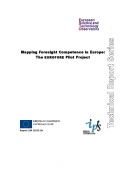 Mapping Foresight Competence in Europe: The EUROFORE Pilot Project
Mapping Foresight Competence in Europe: The EUROFORE Pilot Project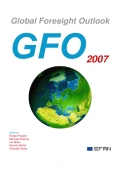 GFO 2007 - Global Foresight Outlook
GFO 2007 - Global Foresight Outlook OZONE: SPACE VISION
OZONE: SPACE VISION
iKNOW has been featured in the media and several research projects:
DIE ZEIT (Germany), Financial Times (Germany), El Heraldo (Colombia), Prospective Foresight Network (France), Nationalencyklopedin (Sweden), EFP - European Foresight Platform (EC), EULAKS - European Union & Latin America Knowledge Society (EC), CfWI - Centre for Workforce Intellience (UK), INFU - Innovation Futures (EC), Towards A Future Internet (EC), dstl - Defence S&T Laboratory (UK), EFSA - European Food Safety Agency (EU), Malaysia Foresight Programme (Malaysia), Bulletins Electroniques more...
